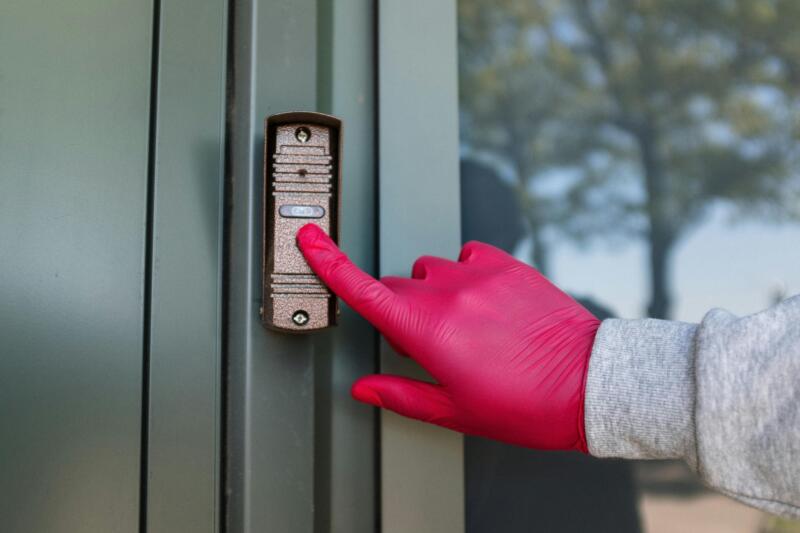Why Home Insurance is Essential
Home insurance is not just a luxury—it’s a necessity. Most mortgage lenders require homeowners to have insurance to protect their property and ensure that they can recover their investment in case of an unforeseen event like a fire, storm, or burglary. Even if you own your home outright, having home insurance can help protect you financially in the event of a disaster.
Home insurance typically covers the structure of your home, personal belongings, and liabilities in the event of accidents. It helps protect against loss due to natural disasters, vandalism, theft, or accidents. The cost of rebuilding or replacing your home and possessions can be astronomical without the right coverage.
Key Types of Home Insurance Coverage
Understanding the types of coverage available is essential when selecting the right home insurance policy. Different insurance policies offer varying levels of protection, and it’s important to choose one that meets your needs. Here are the most common types of coverage:
1. Dwelling Coverage
Dwelling coverage protects the structure of your home in case of damage due to fire, storm, vandalism, or other covered perils. This includes the walls, roof, windows, and foundation. If your home is damaged or destroyed, dwelling coverage helps pay for repairs or rebuilding. It’s essential to ensure that your policy covers the full replacement cost of your home.
2. Personal Property Coverage
Personal property coverage helps protect your belongings, such as furniture, electronics, clothing, and other personal items, from damage or theft. This can be particularly helpful if a fire, storm, or burglary results in the loss of personal belongings. Be sure to take inventory of your possessions to ensure that you have adequate coverage for their replacement value.
3. Liability Coverage
Liability coverage protects you in the event someone is injured on your property. If a visitor is injured on your property and decides to sue, liability coverage can help cover legal fees, medical expenses, and damages. This coverage is especially important for homeowners who entertain guests or have pets, as accidents can happen unexpectedly.
4. Additional Living Expenses (ALE)
If your home becomes uninhabitable due to a covered loss, additional living expenses coverage helps pay for temporary housing, food, and other living expenses while your home is being repaired or rebuilt. This can be a lifesaver if you need to relocate temporarily due to fire or water damage.
5. Medical Payments Coverage
Medical payments coverage pays for medical expenses if someone is injured on your property, regardless of who is at fault. This can cover things like hospital bills, doctor visits, and ambulance fees. While liability coverage protects you if someone sues, medical payments coverage helps cover the immediate medical costs without involving legal action.
Optional Add-Ons to Enhance Your Coverage
In addition to standard home insurance policies, you can opt for additional coverage options or add-ons to ensure that your policy covers more specific situations. These may include:
1. Flood Insurance
Most home insurance policies do not cover flood damage, so it’s important to consider purchasing separate flood insurance, especially if you live in an area prone to flooding. Flood insurance can help protect your home and belongings in the event of heavy rain or flooding.
2. Earthquake Insurance
If you live in an area prone to earthquakes, earthquake insurance can help cover the cost of repairs or rebuilding if your home is damaged or destroyed. This coverage can be essential in regions where earthquakes are common but not typically covered under standard home insurance policies.
3. Umbrella Insurance
Umbrella insurance provides an extra layer of liability protection above and beyond the limits of your home insurance policy. This coverage can help protect you from significant claims or lawsuits that exceed your regular liability limits, offering additional financial security.
4. Home-Based Business Coverage
If you run a business from home, you may need additional coverage to protect your business equipment, inventory, and liability. Home-based business coverage is designed to protect business-related risks and property in your home office or workspace.
How Much Home Insurance Do You Need?
Determining how much home insurance you need depends on various factors, such as the value of your home, personal belongings, and the location of your property. Here are a few steps to help you determine your coverage needs:
1. Estimate the Value of Your Home
To ensure that your dwelling coverage is sufficient, you need to determine the replacement cost of your home. This is the amount it would take to rebuild your home from scratch, not just the market value. Consider the cost of labor and materials in your area and factor in inflation.
2. Inventory Your Belongings
Make a list of your personal belongings and estimate their replacement cost. This inventory will help you determine how much personal property coverage you need. Take photos or videos of your items and keep receipts or appraisals for valuable possessions like jewelry, electronics, and artwork.
3. Consider Your Liability Risk
Assess the risk of potential liability claims based on your lifestyle. If you frequently host guests, have a pool, or own pets, you may need more liability coverage to protect yourself from lawsuits or medical expenses.
4. Review Local Risk Factors
Certain areas are more prone to specific types of damage, such as hurricanes, tornadoes, or wildfires. If you live in an area with higher risks, you may want to consider additional coverage, such as flood or earthquake insurance, to protect your home from these perils.
Tips for Saving on Home Insurance
While home insurance is an essential expense, there are several ways to save on your policy:
1. Shop Around
It’s important to compare rates from multiple insurance providers to ensure that you’re getting the best deal. Different companies offer different premiums and discounts, so shopping around can help you find the most affordable coverage.
2. Increase Your Deductible
One way to lower your monthly premiums is to increase your deductible, which is the amount you pay out-of-pocket before your insurance kicks in. Just be sure you can afford the higher deductible in the event of a claim.
3. Bundle Your Policies
Many insurance companies offer discounts if you bundle your home and auto insurance policies together. This can result in significant savings on both policies.
4. Improve Your Home’s Safety Features
Installing safety features like smoke detectors, security systems, and fire extinguishers can reduce the risk of loss and may qualify you for discounts on your home insurance premiums.
Final Thoughts
Home insurance is an essential investment that provides peace of mind and financial protection for your property. By understanding the different types of coverage, assessing your needs, and considering additional options like flood or earthquake insurance, you can ensure that your home and belongings are fully protected. Don’t forget to shop around for the best rates, and take advantage of discounts that can help save you money while keeping your home secure.
Eligible Highlights:
- Key Coverage Types: Dwelling, personal property, liability, and additional living expenses.
- Optional Add-Ons: Flood, earthquake, umbrella, and home-based business insurance.
- Coverage Needs: Estimate your home’s value and inventory your belongings to determine how much insurance you need.
- Cost-Saving Tips: Shop around, increase your deductible, bundle policies, and improve safety features to lower premiums.
Protecting your home is one of the smartest decisions you can make to safeguard your biggest investment.
Author
-

Sophie Bennett brings years of writing experience to the health and home improvement space. She is passionate about helping readers lead balanced, productive lives. When she’s not researching her next article, Sophie can be found practicing yoga, trying her hand at interior design, or curling up with her favorite historical fiction books.






